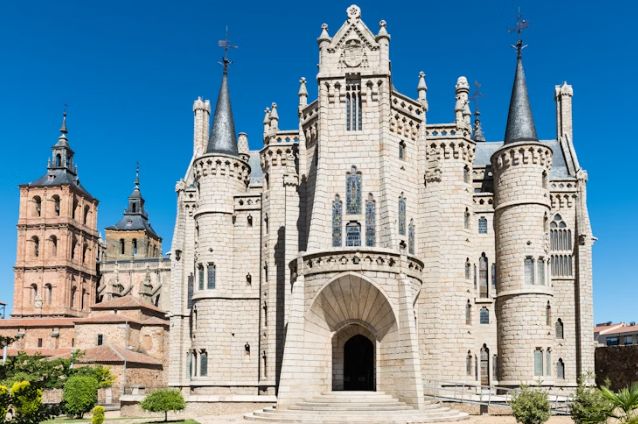
8 fun activities in Northwest Spain beyond the Camino de Santiago – Lonely Planet
Fisterra may be the end of the road for pilgrims but your travels are only beginning in Northwest Spain. Jack Pearce for Lonely Planet
On a cliffside in Fisterra, Spain, I sipped orujo de hierbas (herbal brandy) while victorious hikers rested on rocks overlooking the Atlantic Ocean. Yet unlike those tourists with battered clothes and stamped Pilgrim Passports, I hadn’t arrived at Spain’s Costa da Morte by foot. Rather, I was road-tripping across the Camino de Santiago, one of the world’s most popular pilgrimage routes.
While the Camino splinters into multiple paths with various starting points, the Camino Frances ranks as the most popular track. It intersects with the Spanish regions of Galicia and Castilla y León, which widely appeal to hikers in search of spiritual clarity, a sense of accomplishment, or, quite simply, a nice, long walk.
Northwest Spain, however, is far more than its trails. The Way of St. James pairs the landscapes of Green Spain with Gothic cathedrals, family-run wineries and longstanding traditions that range from the crafty to the spooky. Here, you’ll find eight reasons why Galicia and Castilla y León warrant a pilgrimage in their own right — with or without your hiking boots.
1. Chase waterfalls en route to the end of the world
While the Camino technically ends in Santiago de Compostela, many pilgrims extend their journeys further west to Muxía and Fisterra, fittingly nicknamed “the end of the world” as one of mainland Spain’s westernmost points. Because I was traveling by car, I visited both locations in one scenic day, breaking up the drive with a stop at the Ézaro waterfall. The peaceful landscape counts as Europe’s only river to meet the ocean via waterfall.
Also leading to the world’s end is the quaint fishing town of Muros, where curious dolphins frequently surface in the harbor.
Planning tip: Access to the waterfall is both free and straightforward; there’s a parking lot with a boardwalk that leads to Ézaro, as well as bathrooms, food stands and kiosks to stamp your pilgrim passport. A little ways away, the Mirador de Ézaro overlooks the coastline, with sweeping vistas that demonstrate where, exactly, the river meets the sea.
A breathtaking panoramic view of the Miño River flowing through the lush green vineyards of Ribeira Sacra in Chantada, Galicia, Spain
2. Take a boat trip to the wine region of Ribeira Sacra
For an experience that’s truly off the beaten path, head to the Ribeira Sacra: a dramatic wine landscape known for the production of Mencía. Divided by a series of rivers, the Ribeira Sacra’s steep mountains contain sloping vineyards that are best explored by boat.
I took a boat tour that drifted along the Miño River before stopping at a riverfront wine cellar. There, I savored a lunch of chestnut jamón, Galician-style empanadas, and, of course, plenty of red wine. Some boat tours serve wine onboard, while others – particularly those near the Sil Canyon – beckon to birdwatchers with peregrine falcons and the occasional golden eagle.
Planning tip: Pricing and hours for boat experiences depend on your length of visit and group size; my group tour cost roughly €42 Euros (US$45) and spanned two and a half hours — the perfect amount of time for a leisurely lunch and sightseeing. Even if you’re visiting the Ribeira Sacra by car, you should pre-book your tasting. Some wineries accommodate walk-ins, but depending on the winery’s size, you’re never guaranteed a seat without a reservation.
3. Tour an 18th-century palace-turned-winery
If you prefer your wineries on land, you’ll find one of the most memorable tasting experiences in Castilla y León’s El Bierzo wine region. Palacio de Canedo, an 18th-century palace, functions as a hotel, restaurant and winery, specializing in red Mencía and white Godello wines, with more than 30 hectares (74 acres) of vineyards.
Before you pick up your fork, hop aboard the property’s open-air trolley and embark on something of a wine safari. As you weave between the vines, you’ll feel the terrain firsthand – and whet your appetite for a wine-paired tasting menu. Don’t leave El Bierzo without trying botillo, a regional meat specialty.
Planning tip: A tour on Palacio de Canedo’s “Carroviñas” costs between €48 and €60 (US$52-65) for two people and, like most attractions along the Camino, is best reserved prior to your arrival. If you’re planning to eat, the restaurant tends to fill up, so make your reservation in advance.
Burgos Cathedral with people and tourists walking in the square next to the Cathedral of Saint Mary, in Burgos, Spain
Relax and people watch outside the stunning Burgos Cathedral. Shutterstock
4. Go city-hopping between Burgos and León
It’s easy to mistake the Camino de Santiago for a quiet respite that’s all about nature. The trail certainly overlaps with some of Spain’s most pristine scenery, but it also passes through lively cities brimming with Gothic architecture and tapas bars. The equally spectacular – yet very different – cathedrals in Burgos and León anchor large plazas, perfect for sightseeing and people-watching in tandem. In León’s San Isidoro Museum, you’ll also find a gilded, bejeweled chalice rumored to be the Holy Grail.
If you’re not tired from your hike – or if you, like me, are following the Camino’s shell-engraved footpaths insofar as they guide you to dinner – don’t hesitate to wander. Whether you stroll along the riverbank in Burgos or embark on a tapas crawl in León’s Barrio Húmedo (try Rúa 11), end your outing with a generous pour of vermouth. I ordered a glass steps from Burgos’ cathedral at Vermuteria Victoria, which also serves its trademark spirit in the form of vermouth-fried cod.
Planning tip: Situated roughly two hours apart, Burgos and León warrant at least one day each. Hotels abound in each city’s old town, though neither destination is particularly huge. Regardless of where you stay, you’ll never be too far from your chosen activity.
5. Play cheesemonger for the day
Less than two miles from the Camino’s path, Ecoagroturismo Arqueizal pairs tours of traditional farmhouses with lessons in cheesemaking. While visiting the farm, I turned milk into cow cheese, stirring, straining, and forming it by hand. This activity not only supplied me with a spread for the next morning’s pan gallego (traditional bread), but also grounded me in rural Galician life.
Alternatively, if you prefer sweet to savory, head west to the “living honey museum,” Enredo do Abelleiro. For a few euros, you’ll don a beekeeping suit and witness the intricacies of worker bees directly from their hive. In between these two sites, the women-run Milhulloa Coop directly overlaps with the Camino Frances and teaches tourists how to make natural cosmetics of their choosing.
Planning tip: If you’re not hiking, you’ll need a car to reach any of the above locations, all of which are an hour or less from Santiago de Compostela. Make sure to book any hands-on activities or tours in advance, whether you want to make toothpaste or cheese. If you’re looking to simply shop for a jar of fresh honey or shampoo, however, you can stop by either the Milhulloa Coop or Enredo do Abelleiro according to their hours listed online.
6. Marvel at Gaudi’s designs and eat your fill of chocolate
Barcelona’s Sagrada Familia may be under construction until 2026, but Astorga’s Palacio de Gaudí can help fill that architectural void. Antoni Gaudí started work on the palace in 1988, and his trademark style characterizes the building’s airy, whimsical interior and curved, Neo-Gothic facade.
Outside the palace’s grounds, however, chocolate is akin to the town’s architect, with a presence in Astorga that dates back to the 1600s. For tourists with a sweet tooth – or pilgrims in search of a sugar rush – tour the museum of chocolate. Then, sip thick, Spanish-style hot chocolate from La Cepedana, the city’s most historic chocolatier.








